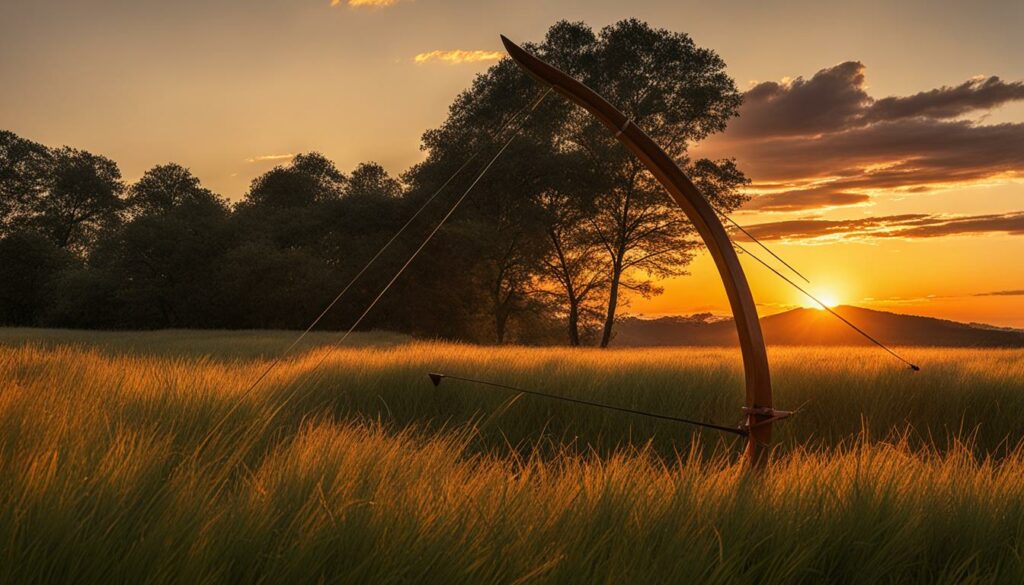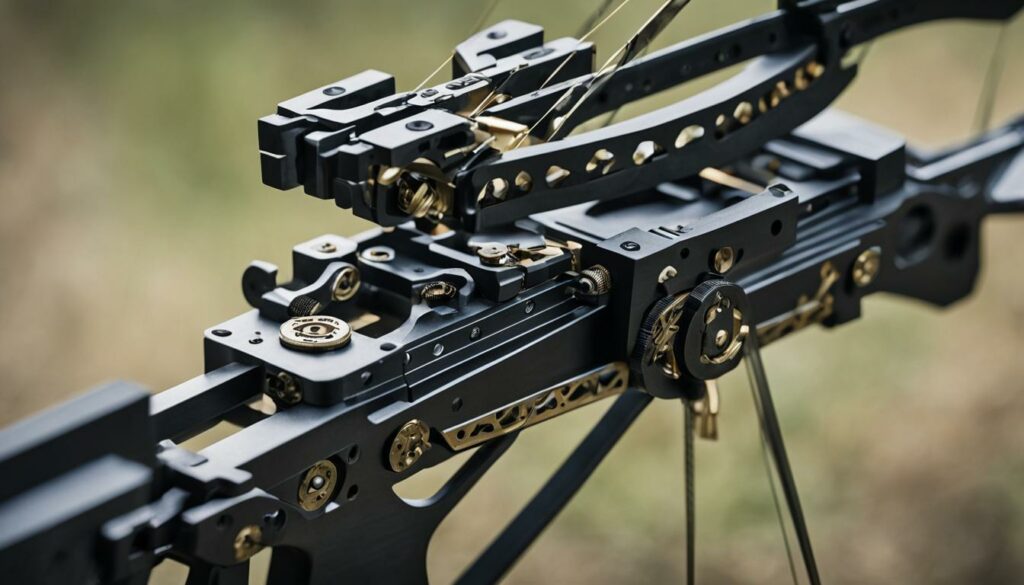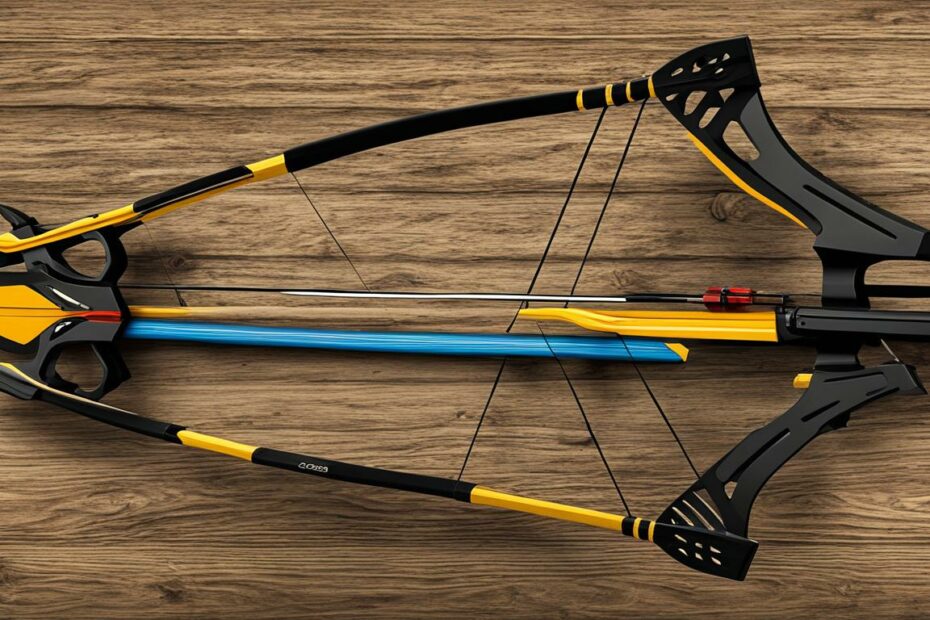Archery is a 10,000-year-old tool with various bow types available for different uses. All archery bows have three main parts: limbs, riser, and bowstring.
Limbs provide the force to move the arrow, the riser is the center part of the bow that contains the grip, and the bowstring creates energy for a better shot.
This article will explore the different types of bows used in archery and hunting. Whether you’re a beginner looking to get into archery or an experienced hunter, understanding the characteristics of each bow type can help you make an informed decision.
We will cover recurve bows, longbows, compound bows, and crossbows, as well as some less common types, such as takedown and horse bows.
So, whether you’re interested in traditional bows or advanced technological bows, this article will provide valuable insights into archery and hunting bows. Let’s dive in!
Recurve Bows
Recurve bows are one of the oldest and most traditional types, with a rich history dating back to 800 B.C. These bows are characterized by their curved limbs, which allow for increased energy storage and ultimately result in a more powerful shot.
Recurve bows are commonly made from various materials, such as fiberglass, carbon, or wood, with a wood or composite riser. The limbs curve back towards the archer, providing a unique design that enhances the bow’s performance.
One of the most notable aspects of recurve bows is their versatility. They are suitable for both beginners and experienced archers, making them a favorite choice among enthusiasts of all levels. Recurve bows are known for their reliability and ease of use, contributing to their popularity.
Interestingly, recurve bows are often used in the Olympic Games, showcasing their widespread recognition and prominence in archery competitions.
| Advantages of Recurve Bows | Disadvantages of Recurve Bows |
|---|---|
|
|
Longbows
Longbows are a classic and timeless archery bow that exemplify simplicity and elegance. These traditional bows are renowned for their long, straight wooden poles, which serve as the main structure of the bow. Longbows typically feature a string attached to both ends of the wooden pole, creating tension when drawn.
Longbows require greater physical strength and skill to handle and shoot accurately, unlike other bow types. This challenge has made them a favorite among experienced archers and enthusiasts seeking a deeper connection with the sport.
Due to their power and range, longbows were historically used in warfare. Today, they are used mainly for target shooting, although skilled hunters still appreciate their effectiveness in hunting various games.
Advantages of Longbows:
- Classic and traditional design
- Simple to use and maintain
- Highly accurate over long distances
- Offers a deep connection with archery
To fully appreciate the elegance of a longbow, one must understand its construction and components:
| Component | Description |
|---|---|
| Wooden Pole | The main body of the longbow is typically made from strong and flexible wood such as yew, ash, or hickory. |
| String | The vital element that attaches to both ends of the wooden pole and stores the energy necessary to propel the arrow forward. |
| Grip | The part of the longbow where the archer holds and stabilizes the bow, ensuring a steady shot. |
Longbows have a rich history and continue to captivate archery enthusiasts with their simplicity and prowess. They are a testament to the enduring appeal of traditional archery and are an excellent choice for those seeking a deeper connection with the art.

Compound Bows
Compound bows represent a significant technological advancement in archery. Featuring a system of pulleys and cables, they are designed to allow archers to hold heavy draw weights with significantly less effort than traditional bows.
This innovation has revolutionized the sport, making it accessible to more individuals, including those with less physical strength.
One critical advantage of compound bows is their high accuracy. The pulley-cable system provides a consistent and smooth draw, resulting in a more precise shot. This makes compound bows particularly popular among hunters who require accuracy for successful wild game hunting.
Composite Materials for Strength and Durability
Compound bows are constructed using composite materials, such as fiberglass, which offer exceptional strength and durability. These materials ensure the bow can withstand the stress and strain exerted during shooting. Advanced materials also contribute to improved longevity, reducing the need for frequent repairs or replacements.
Furthermore, compound bows incorporate various accessories, such as sights, stabilizers, and arrow rests, enhancing their performance and accuracy. These accessories can be adjusted to suit the archer’s preferences, allowing for a more customized shooting experience.
Crossbows
Crossbows are a unique type of bow specifically designed for hunting. They offer a different shooting experience than traditional bows, making them an excellent choice for those who want to try bowhunting but may not have the time to master the skills required for a recurve or compound bow.
Unlike other bows, crossbows are mounted horizontally on a stock with a trigger release mechanism. This design allows the shooter to hold the bow and aim much like a rifle, providing stability and ease of use.
The trigger release mechanism ensures consistent shots and eliminates the need to hold the draw weight, making it easier for users with less upper body strength to shoot accurately.
One distinctive feature of crossbows is their shorter limbs and unique grip. The shorter limbs are compact and maneuverable, making crossbows suitable for hunting in tight spaces such as dense forests or narrow hunting blinds. The grip is typically ergonomic, allowing for a comfortable and secure hold while aiming and shooting.
Due to their different mechanical configurations, crossbows usually require a higher poundage to draw weight than other bow types.
This higher poundage and shorter limbs translate to powerful shots and greater accuracy over longer distances. Choosing a crossbow with a draw weight that suits your physical abilities is essential.
Crossbows are popular among hunters during rifle or shotgun seasons when firearms are allowed. They offer a quieter and more challenging alternative to firearms, allowing hunters to get closer to their prey without alarming them.
Many states have specific regulations regarding the use of crossbows, so it’s crucial to familiarize yourself with the local hunting laws and regulations before using a crossbow.
So, if you’re interested in bowhunting but prefer a more user-friendly alternative to traditional bows, try trying crossbows. Their unique design, ease of use, and powerful shots make them an excellent choice for hunting enthusiasts.
Benefits of Crossbows for Hunting:
- Easy to use, even for beginners
- Compact and maneuverable design
- Powerful shots with high accuracy
- Quieter alternative to firearms
- Allows for closer proximity to prey

| Feature | Recurve Bows | Compound Bows | Crossbows |
|---|---|---|---|
| Design | Curved limbs | Pulleys and cables | Horizontal mounted with a stock |
| Grip | Wood or composite | Ergonomic | Ergonomic |
| Draw Weight | Varies | Adjustable | Higher poundage |
| Usage | Target shooting, Olympic Games | Hunting, target shooting | Hunting |
Other Types of Bows
While recurve bows, longbows, compound bows, and crossbows are widely known and used in archery and hunting, other types of bows are worth mentioning. Two such bows are takedown bows and horse bows.
Takedown Bows
Takedown bows are perfect for archers who require easy storage and transportation options. These bows are designed to be disassembled into separate limbs and risers, allowing them to fit into compact cases.
Takedown bows are popular among archery enthusiasts who frequently travel or participate in outdoor activities. They offer convenience and versatility without compromising performance.
Horse Bows
Horse bows have a rich historical background, based on the bows used by mounted archers throughout history. These bows are characterized by their shorter length and highly recurved limbs, enabling them to be used effectively on horseback.
Horse bows are known for their maneuverability, making them suitable for archery competitions that involve shooting while riding. Additionally, they have gained popularity among traditional archery enthusiasts for their unique design and performance.
Both takedown and horse bows offer archers their advantages and uses. Whether it’s the convenience and portability of the takedown bow or the historical appeal and agility of the horse bow, these bows provide archers with different options to enhance their archery experience.
Conclusion
Archery is a captivating sport that offers various disciplines and exciting competitions for archers of all skill levels. Whether you’re a beginner or a seasoned pro, there is an archery discipline that suits your interests and abilities.
Target archery is the most popular discipline. Archers showcase their precision and accuracy by shooting at stationary circular targets. This discipline requires focus, control, and consistent form, making it a skill test.
For those who prefer a more dynamic and adventurous experience, field and 3D archery are the way to go. Archers navigate outdoor courses in these disciplines and shoot at targets at various distances, heights, and angles. It’s a thrilling challenge that combines athleticism, strategy, and a keen eye for the environment.
Archery is also a sport that caters to everyone, including individuals with disabilities. Para archery allows archers with physical impairments to compete and excel in a supportive and inclusive environment. It is a testament to the sport’s inclusivity and the determination of these remarkable athletes.
Whether competing in archery tournaments or simply enjoying a recreational shoot, the world of archery has something for everyone. It’s a sport that combines precision, focus, and strength, offering endless opportunities for personal growth and achievement. So pick up your bow, aim, and experience the thrill of archery firsthand.
